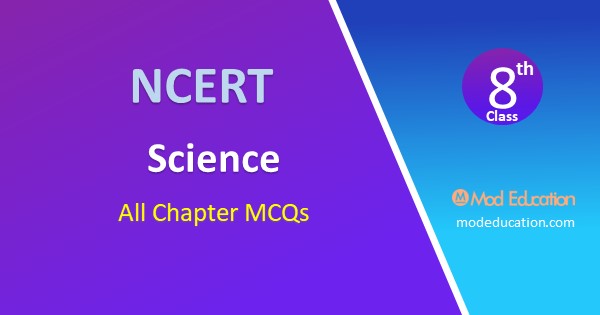MCQ Questions for Class 8 Science Chapter 6 : NCERT CBSE RBSE other Board MCQ Questions for Class 8 Science Chapter 6 Combustion and Flame with Answers Pdf free download. MCQ Questions for Class 8 Science with Answers were prepared based on the latest exam pattern.

MCQ Questions for Class 8 Science Chapter 6 Combustion and Flame with Answers
1. A chemical process in which a substance reacts with oxygen to give off heat is called
a) Conduction
b) Conjunction
c) Combustion
d) Confusion
Answer: (c)
2. Fuel may be
a) Solid only
b) Solid,Liquid or gas
c) Liquid only
d) Gas only
Answer: (b)
3. The amount of heat energy produced on complete combustion of_____ fuel is called its calorific value.
a) 1 litre
b) 1 Kg
c) 1 milli litre
d) 1 gram
Answer: (b)
4. The substances which have very low ignition temperature and can easily catch fire with a flame are called
a) Inflammable substances
b) Flaming substance
c) Fire proof substance
d) None of the above
Answer: (a)
5. When we heat water in a paper bowl over a candle, the paper does not catch fire because
a) Paper is not inflamable
b) Paper gets wet
c) Due to water the ignition temperature of paper is not reached
d) This is not possible
Answer: (c)
6. When oil or petrol catches fire, water is not used to extinguish it because
a) Water covers oil and oil burns under water layer which may not be noticeable
b) Water is heavier than oil / petrol and so remains below the oil layer which continues to burn
c) Water get mixed with oil and increases fire
d) Water gets evaporated
Answer: (b)
7. The amount of heat energy produced on complete combustion of 1 kg of a fuel is called
(a) calorific value
(b) significant value
(c) heat value
(d) internal energy
Answer: (a) calorific value
8. Which zone represents the partial combustion in candle flame?
(a) Outer zone
(b) Middle zone
(c) Inner zone
(d) Lower zone
Answer: (b) Middle zone
9. Burning coal in a closed room will produce
(a) nitrogen oxides
(b) carbon dioxide
(c) carbon monoxide
(d) oxygen
Answer: (c) carbon monoxide
10. Substances which catch fire are called
(a) acids
(b) bases
(c) combustible
(d) burners
Answer: (c) combustible
11. Out of these, which is able to control fires?
(a) NH3
(b) H2
(c) CO2
(d) F2
Answer: (c) CO2
12. Which zone of a flame does a goldsmith use for melting gold and silver ?
(a) Outer zone
(b) Middle zone
(c) Inner zone
(d) Lower zone
Answer: (a) Outer zone
13. Calorific value of a fuel is expressed in
(a) kilojoule per kilogram
(b) kilojoule per gram
(c) joule per milligram
(d) kilojoule per milligram
Answer: (a) kilojoule per kilogram
14. Which is non-combustible substance?
(a) Wood
(b) Paper
(c) Iron nails
(d) Straw
Answer: (c) Iron nails
15. Acid rain contains mainly
(a) oxygen and nitrogen gas
(b) fluorine and chlorine gas
(c) magnesium oxide
(d) nitrogen oxide and sulphur dioxide
Answer: (d) nitrogen oxide and sulphur dioxide
Match the following items given in Column A’ with that in Column ‘B’.
| Column A | Column B |
| Fire extinguisher | Burning of candle |
| Slow oxidation | Renewable source |
| Kindling temperature | Natural gas |
| Tidal energy | Cooking gas |
| Fossil fuel | Inflammable |
| Oxygen gas | Burning starts |
| LPG | Carbon dioxide |
| Alcohol | Supporter of combustion |
Answer:
| Column A | Column B |
| Fire extinguisher | Carbon dioxide |
| Slow oxidation | Burning of candle |
| Kindling temperature | Burning starts |
| Tidal energy | Renewable source |
| Fossil fuel | Natural gas |
| Oxygen gas | Supporter of combustion |
| LPG | Cooking gas |
| Alcohol | Inflammable |
